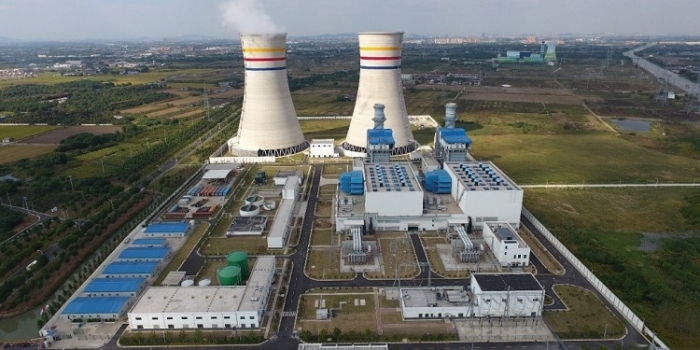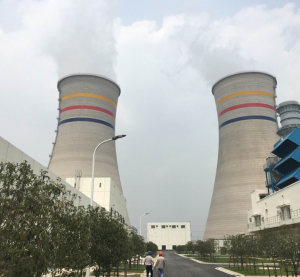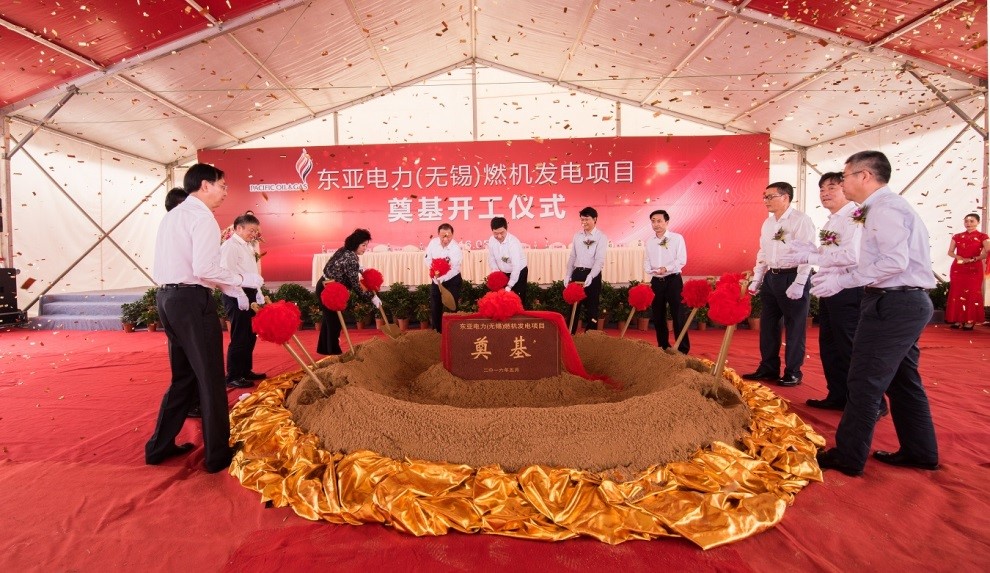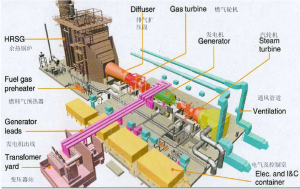Lombard Odier Asia Summit: Towards a Greener and More Circular Economy
Investors have an active role to play in supporting the private sector’s efforts in building a greener future for all, which means moving from an economy that is W.I.L.D. -...

Latest updates on what's happening in RGE Group

Pacific Oil & Gas (PO&G) is an independent energy resources development company focused on helping meet the increasing energy requirements of growing Asian economies. Formed in 2003, it invests, develops, builds, owns, and operates innovative projects throughout the energy supply chain. In this series ‘Aiding Asia’s Clean Energy Transition’, we take a peek at some of its operating assets in China.

The plant is sited in the west of Donggang town of Xishan district in Wuxi and spans 13.5 hectares. These cooling towers are a prominent feature of the plant. Each tower is 118 m tall and the ring base diameter is 83 m.
The Wuxi Combined Cycle Gas Turbine (CCGT) power plant is the largest natural gas power plant in the city of Wuxi with a capacity of 932MW. A major energy infrastructure project in the 13th Five-Year Plan of Jiangsu Province in China, the plant is a USD350 million (CNY 2.5 billion) 70/30 joint venture between EAP (WUXI) Holdings Limited and Wuxi Public Utilities Industrial Group Co. Ltd, a state-owned enterprise.
In full operation since April 2019, the power plant is not only highly efficient in supporting peak shaving of power demand in Jiangsu but also reduces emissions significantly compared to coal, the predominant source of energy in China.
This is PO&G’s second CCGT power plant in China. The first, in Xiamen, has been in operation for more than a decade, since 2009.

Groundbreaking ceremony of Wuxi CCGT power plant. Work commenced in mid-2016 to build two 9F gas-steam combined cycle peak-shaving generator units.
 Natural gas enters a regulation station of the plant through an 18 km pipeline. The gas is purified, pressure-adjusted and heated before it goes into the gas turbine.
Natural gas enters a regulation station of the plant through an 18 km pipeline. The gas is purified, pressure-adjusted and heated before it goes into the gas turbine.
In the gas turbine, a compressor continuously draws air from the atmosphere. The compressed air enters the combustion chamber, mixes with the natural gas, and is burned into a high-temperature flue gas which generates power in the turbine.
In the combined cycle power generation process, the high-temperature flue gas then moves from the gas turbine into the waste heat boiler (HRSG) which generates super-heated steam through heat exchange. The steam is pushed into the steam turbine, driving the generator to produce electricity.
In Jiangsu Province, coal is the predominant energy source at over 60% while gas, the second highest, occupies only 12% of the energy mix. The Wuxi CCGT power plant uses natural gas which in itself is a cleaner choice. The use of gas-steam combined cycle to convert the natural gas into electricity also minimises environmental impact in other ways.
The generation efficiency of 600 MW ultra supercritical coal-fired units is presently about 40%, while the high combustion efficiency in gas-steam combined cycle is around 60%. The use of of natural gas for power generation also eliminates dust and sulfur dioxide emission and reduces nitrogen oxide and carbon monoxide emissions to below 25ppm. Noise level is also reduced.
| 2019 Emissions (based on 1.632 billion kWh) |
Dust ton/year |
SO2 ton/year |
NOx ton/year |
CO2 ton/year |
|---|---|---|---|---|
| Wuxi CCGT Power Plant | 17 | 10 | 200 | 652,800 |
| Ultra-low Emission Coal-Fired Power Plant | 37 | 60 | 280 | 1,346,400 |
| Normal Coal-Fired Power Plant | 74 | 180 | 350 | 1,346,400 |
The flexibility of fast start-up and stop empowers Wuxi CCGT with strong peak shaving capability to meet both the peak load and valley load of power grid. The gas turbine takes under 20 minutes from start to full load, 60 minutes for hot start-up and 90 minutes for warm start-up of the combined cycle.
Combined cycle power plants consume little water, making them suitable for water-scarce areas. They are much more stable compared to other clean energy sources like solar and wind.
Apart from Wuxi and Xiamen CCGT power plants, PO&G also owns the Jiangsu Rudong LNG Receiving Terminal which has been operating since 2011. The Yangjiang LNG Receiving Terminal is under construction.
PO&G has offices and operations in various parts of China.
| PO&G Beijing Office |
|
| PO&G Nanjing Office |
|
| Rudong LNG Receiving Terminal |
|
| Wuxi CCGT Power Plant |
|
| Xiamen CCGT Power Plant |
|
| Yangjiang LNG Receiving Terminal |
|
More on PO&G: